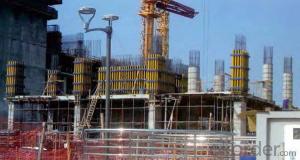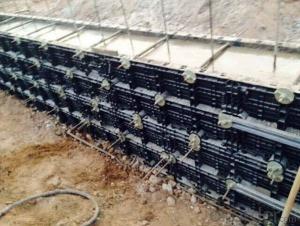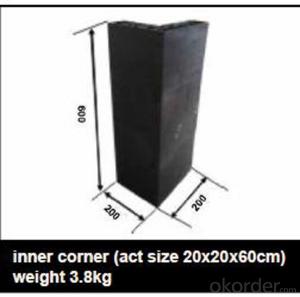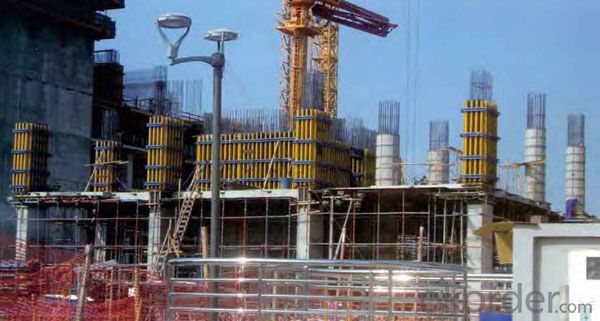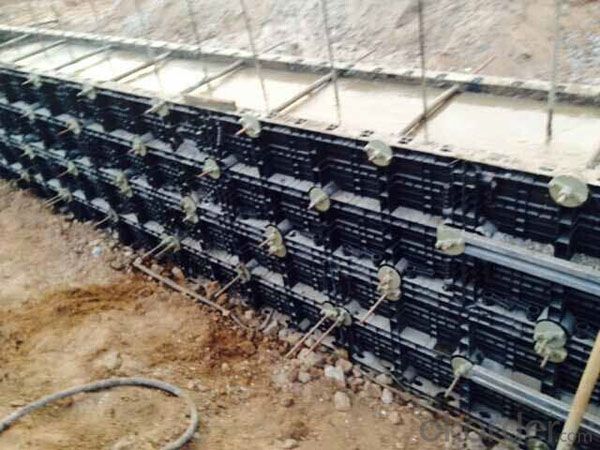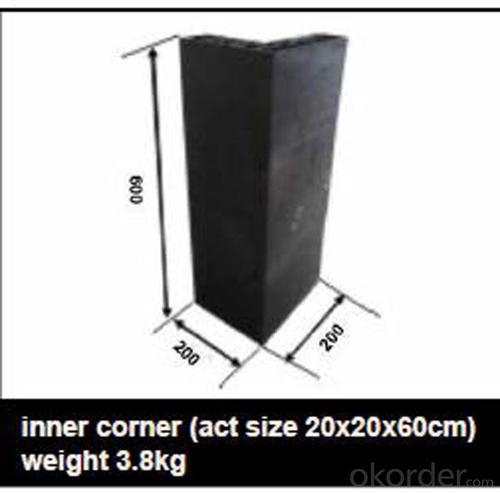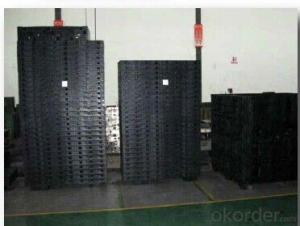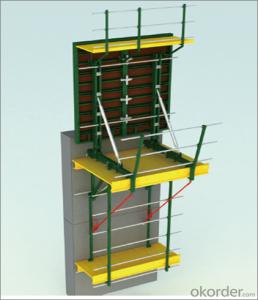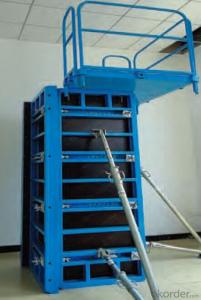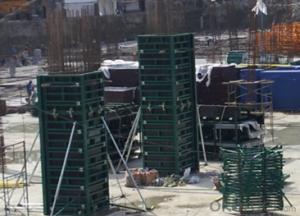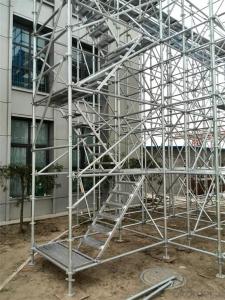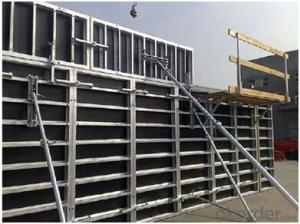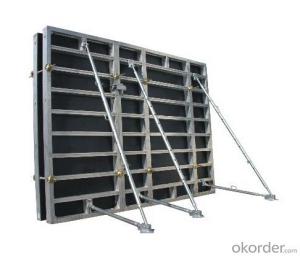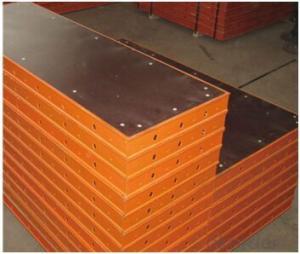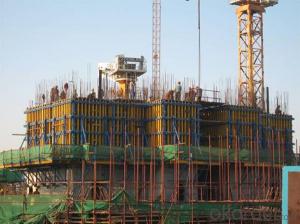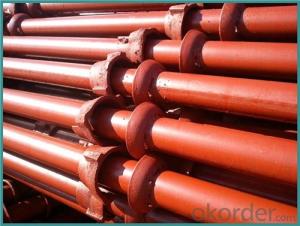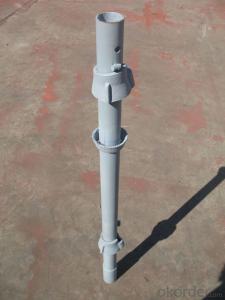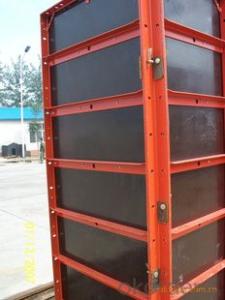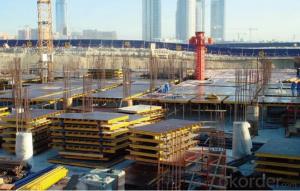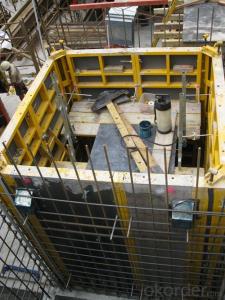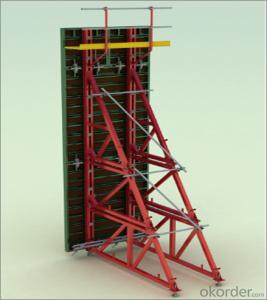Scaffolding Parts Formwork Doka Formwork Scaffolding With High Quality
- Loading Port:
- Tianjin
- Payment Terms:
- TT OR LC
- Min Order Qty:
- 5000 set
- Supply Capability:
- 50000 set/month
OKorder Service Pledge
OKorder Financial Service
You Might Also Like
Scaffolding Parts Formwork Doka Formwork Scaffolding With High Quality
Circular Column Formwork Outrigger For Scaffolding With New Design
Plastic Formwork Concrete Formwork Circular Column Used Scaffolding Props New Design
Developing with new technology materials, steel formworks is no longer a must in construction concrete process. More and more buildings are established with plastic formworks. And workers love this new formworks much more.
The advantages of plastic formworks:
Scaffolding Parts Formwork Doka Formwork Scaffolding With High Quality
1.First of all--light
Yes it is the first advantage of plastic formwork. It wins the great praise of both contractors and workers.
The biggest panel is 120×1500px,weights 10.5kg only. It can be lift and set up by one person easily, which means there is no need for cranes on site.Saves a lot of cost and time.
2.Easy set up
Different size of panels can firmly locked by simply turn the special handles to 90 degree. The Panels has rib on the back, which makes the system need not traditional wood blocks and nails. The panels have holes to fit tie rod, guarantee the strength of the whole system.
3.Modularity
Modular formworks composed by different size of panels..
4.Strength
The handles are made by high strength Nilon, each panel locked by at least 4 handles, which makes the whole system strong enough to pour 1000px walls.
5.Environment friendly
The system needs no cut and nail due to the variety size. Also it needs nearly no wood. The material can be recycled after broken, so it will not pollute the environment.
6.Consequent
Concrete does not stick to plastic formwork, thus the panels need no oil before using, and can be cleaned simply by water. The surface of the wall which build by modular formwork is smooth and without rework.
Scaffolding Parts Formwork Doka Formwork Scaffolding With High Quality
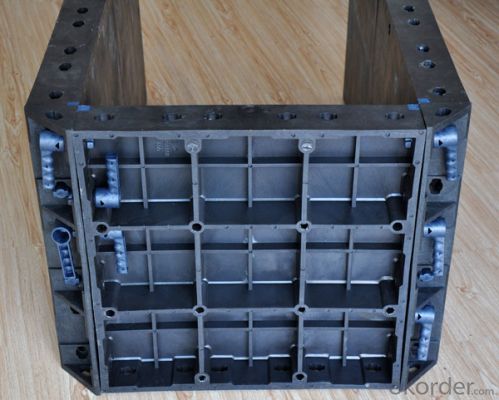
Scaffolding Parts Formwork Doka Formwork Scaffolding With High Quality
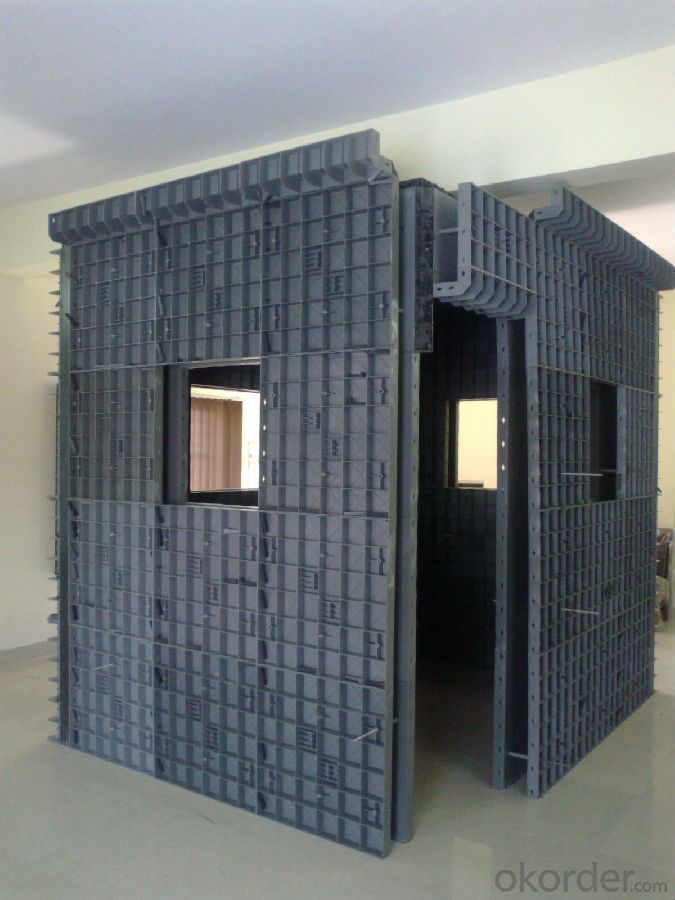
Scaffolding Parts Formwork Doka Formwork Scaffolding With High Quality
Advantage
* Good loading capacity
* Easy to assemble and dismantle
* Stable and durable thanks to its structual design & automatic welding quality
* Customized solution helps you work safe, save cost and convenient
* Excellent quality for formwork & scaffolding with wide choices
Packing
in bulk or in bundle, or as requested
Shipping
15-20 Days.
Normally small orders, it needs just 15-20 business days to the port. For goods with stock, it would be even shoter.
Scaffolding Parts Formwork Doka Formwork Scaffolding With High Quality
Other scaffolding & formwork products:
(1) Scaffolding System:
Including Ringlock Scaffolding System and accessories; Cuplock Scaffolding System and accessories; Kwikstage Scaffolding System and accessories; Haki Scaffolding System and accessories;
(2) Scaffolding Frame & Accessories:
Including Walk Through Frame Scaffolding; Ladder Frame Scaffolding; Accessories; we also can make scaffolding according to your samples or drawings.
(3) Scaffolding Couplers/Clamps:
We can produce all kinds of forged and pressed couplers, including British type couplers, American type couplers, German type couplers, Italian type couplers ,fence couplers, BRC coplers and so on. We also can produce according to your drawings or samples.
FAQ Scaffolding Parts Formwork Doka Formwork Scaffolding With High Quality
Why Us?
We are one of the Top 500 in the world, largest construction materials supplier in China. Also we are a state-owned company and respond to every customer with large and also small orders.
We own professional manufacturers with powerful producing capacity.
Extensive and comprehensive quality control system
Excellent products with competitive prices.
Efficient services in pre and after sale.
Full energy with affluent experience team.
- Q: What are the quality control measures for steel frame formwork removal?
- Quality control measures for steel frame formwork removal involve several steps to ensure the process is done safely and efficiently. Here are some key measures: 1. Inspection: Before removing the steel frame formwork, a thorough inspection is conducted to check for any damaged or worn-out parts. Any defects or issues found during the inspection should be addressed and repaired before proceeding with removal. 2. Safety measures: Prior to removal, proper safety precautions should be taken. This includes providing workers with appropriate personal protective equipment (PPE) such as safety helmets, gloves, and safety shoes. Additionally, ensuring the area around the formwork is clear of any hazards or obstacles is essential to prevent accidents during the removal process. 3. Proper tools and equipment: The use of suitable tools and equipment is crucial for efficient and safe removal. This includes using wrenches, spanners, and tools specifically designed for dismantling steel frame formwork. Using the correct tools helps to prevent damage to the formwork and ensures a smooth and accurate removal process. 4. Methodical dismantling: The dismantling process should be carried out in a systematic and organized manner. This involves removing the formwork in the reverse order of installation, starting from the top and working downwards. Proper care should be taken to avoid any undue stress or pressure on the formwork during removal. 5. Inspection during removal: Regular inspections should be conducted during the removal process to ensure that the formwork is being dismantled correctly. This includes checking for any signs of damage, misalignment, or wear and tear. Any issues identified should be promptly addressed to prevent further damage or compromise to the structure. 6. Documentation: It is important to maintain accurate documentation throughout the entire removal process. This includes recording any issues or defects found during inspections, as well as documenting the steps taken to address them. Proper documentation helps to keep track of the quality control measures implemented and serves as a reference for future projects. Overall, quality control measures for steel frame formwork removal involve comprehensive inspections, adherence to safety protocols, the use of proper tools and equipment, methodical dismantling, regular inspections during removal, and accurate documentation. Following these measures ensures that the formwork is removed safely and efficiently, minimizing the risk of accidents and maintaining the structural integrity of the project.
- Q: How does steel frame formwork contribute to better concrete consolidation around reinforcement?
- There are several ways in which steel frame formwork contributes to improved concrete consolidation around reinforcement. Firstly, the rigid structure of the steel frames holds the formwork panels in place, preventing any deformation or bulging caused by the weight and pressure of the concrete. This ensures that the formwork maintains its correct dimensions and shape, resulting in even pouring of the concrete around the reinforcement. In addition, the support and stability provided by the steel frames prevent any movement or shifting of the formwork during the pouring and compaction of the concrete. This is particularly important when dealing with high-strength or large volumes of concrete, as any displacement of the formwork can lead to insufficient consolidation around the reinforcement. Furthermore, steel frame formwork often includes adjustable features like wedges or clamps, allowing for precise alignment and positioning of the formwork panels. This ensures proper centering of the reinforcement within the formwork, guaranteeing even distribution of the concrete around the reinforcement without any gaps or voids. Moreover, the smooth and flat surface provided by the steel frames facilitates the smooth flow and placement of the concrete. This minimizes the risk of air pockets or voids forming around the reinforcement, ensuring complete encapsulation and surrounding of the reinforcement by the concrete. Overall, steel frame formwork plays a critical role in ensuring improved concrete consolidation around reinforcement by offering a rigid, stable, and precisely aligned structure that supports the formwork panels and allows for the proper flow and placement of the concrete. This results in a stronger and more durable concrete structure with enhanced structural integrity.
- Q: What are the different types of accessories and attachments available for steel frame formwork?
- There are various types of accessories and attachments available for steel frame formwork, including adjustable props, scaffold brackets, tie rods, anchor bolts, corner brackets, clamps, wedges, and couplers. These accessories and attachments are designed to provide stability, support, and ease of use during the construction process.
- Q: Are there any limitations to the shape or design of structures that can be constructed using steel frame formwork?
- Yes, there are limitations to the shape or design of structures that can be constructed using steel frame formwork. While steel frame formwork is a versatile and widely used construction technique, it does have certain limitations that need to be considered during the design process. One limitation is the complexity of curved or irregular shapes. Steel frame formwork is better suited for structures with straight lines and right angles. Creating complex curved or irregular shapes can be challenging and may require additional customization and fabrication. Another limitation is the size and weight of the structure. Steel frame formwork is capable of constructing large and tall structures, but there are practical limits to the size and weight that can be achieved. The weight of the formwork itself, as well as the weight of the concrete being poured, can put strain on the steel frames and supports. This requires careful engineering and consideration to ensure the structural integrity of the formwork. Additionally, the height and depth of the structure can also be a limiting factor. Steel frame formwork systems are typically designed to be modular and adjustable, but there are practical limits to the height and depth that can be achieved. Beyond a certain point, additional support systems may be required to ensure stability and safety. Lastly, the aesthetic design of the structure may be limited by the use of steel frame formwork. While the formwork can be covered with various finishes or cladding materials, the exposed areas of the structure will have a distinct steel frame appearance. This may not be suitable for certain architectural designs that require a different aesthetic. In summary, while steel frame formwork is a versatile construction technique, it does have limitations when it comes to complex shapes, size and weight, height and depth, and aesthetic design. These limitations should be carefully considered during the design process to ensure the feasibility and practicality of using steel frame formwork for a particular structure.
- Q: Are there any restrictions on the formwork height that can be achieved with steel frame formwork in high-rise structures?
- There are generally no specific restrictions on the formwork height that can be achieved with steel frame formwork in high-rise structures. Steel frame formwork is known for its versatility and ability to be customized to fit the specific requirements of a project. It can be easily adjusted and extended to achieve the desired formwork height for high-rise structures. However, there are a few factors that need to be considered when determining the formwork height. These include the structural stability of the formwork system, the weight-bearing capacity of the steel frame, and the safety of the workers involved in the construction process. Structural stability is crucial in high-rise structures, and the formwork system needs to be designed and engineered to withstand the loads and forces exerted by the concrete during pouring and curing. The formwork should be able to resist any deflection or deformation that may occur due to the height and weight of the concrete. The weight-bearing capacity of the steel frame formwork is also a critical factor. The formwork must be able to support the weight of the concrete, reinforcement, and any additional equipment or materials used during construction. Adequate calculations and analysis should be conducted to ensure that the steel frame can handle the anticipated loads at various heights. Furthermore, safety is paramount in high-rise construction. The formwork system should be designed and installed in compliance with relevant safety regulations and standards. Measures like guardrails, fall protection systems, and proper access should be implemented to ensure the safety of workers working at higher elevations. In summary, while there are generally no specific restrictions on the formwork height achievable with steel frame formwork in high-rise structures, factors such as structural stability, weight-bearing capacity, and safety considerations need to be carefully evaluated and addressed to ensure successful and safe construction.
- Q: Does steel frame formwork require any specific curing methods?
- No, steel frame formwork does not require any specific curing methods as it is primarily used for providing structural support during construction rather than for curing concrete.
- Q: Are there any specific considerations for using steel frame formwork in heritage buildings?
- Yes, there are several specific considerations for using steel frame formwork in heritage buildings. Firstly, it is important to ensure that the steel frame formwork does not cause any damage to the existing heritage structure. This can be achieved by conducting a thorough structural analysis of the building and designing the formwork accordingly. The formwork should be able to support the weight of the concrete without exerting excessive pressure on the heritage structure. Secondly, the design of the steel frame formwork should take into account any architectural or historical features of the building that need to be preserved. This may include intricate detailing, decorative elements, or specific construction techniques that are unique to the heritage building. The formwork should be flexible enough to accommodate these features and ensure their preservation. Additionally, the use of steel frame formwork should be in compliance with any heritage preservation guidelines or regulations. These guidelines may dictate specific materials, techniques, or processes that need to be followed in order to protect the integrity of the heritage structure. It is important to consult with heritage preservation experts, architects, and engineers to ensure that the steel frame formwork meets these requirements. Furthermore, steel frame formwork should be carefully installed and dismantled to minimize any potential damage to the heritage building. This may involve using specialized equipment, techniques, or protective measures to prevent any accidental impacts or vibrations. It is crucial to work closely with experienced contractors who have expertise in working with heritage structures to ensure the safety and preservation of the building. In conclusion, the use of steel frame formwork in heritage buildings requires careful consideration of the structural, architectural, and historical aspects of the building. By taking these specific considerations into account, it is possible to successfully utilize steel frame formwork while preserving the integrity and heritage value of the building.
- Q: Can steel frame formwork be used for seismic-resistant construction?
- Yes, steel frame formwork can be used for seismic-resistant construction. Steel is a strong and durable material that can withstand the forces and vibrations caused by earthquakes. It provides stability and resistance to the structure, making it suitable for seismic areas where the risk of earthquakes is high.
- Q: Can steel frame formwork be used for both horizontal and vertical formwork applications?
- Steel frame formwork is suitable for both horizontal and vertical formwork applications. It is a versatile and sturdy system that can be effortlessly assembled and modified to accommodate different shapes, sizes, and heights of concrete elements. Construction projects often utilize steel frame formwork for creating walls, columns, beams, slabs, and other structural elements. This formwork system offers exceptional stability and support, making it appropriate for both vertical and horizontal applications. Moreover, steel frame formwork boasts impressive load-bearing capacity, durability, and reusability, making it a cost-effective option for construction formwork.
- Q: What are the different types of concrete release agents used with steel frame formwork?
- There are several different types of concrete release agents that can be used with steel frame formwork. These release agents are applied to the surface of the formwork to prevent the concrete from sticking to it during the pouring and curing process. One common type of release agent is a petroleum-based product. These agents are typically oil-based and provide a barrier between the formwork and the concrete. They are easy to apply and provide a smooth release, allowing for easy removal of the formwork once the concrete has cured. However, petroleum-based release agents can be flammable and may have a negative impact on the environment. Another type of concrete release agent is a water-based product. These agents are typically made from a combination of water, surfactants, and other additives. They are non-toxic and environmentally friendly, making them a popular choice for many contractors. Water-based release agents are easy to apply and provide a clean release, leaving little or no residue on the formwork. There are also specialty release agents available for specific applications. For example, some release agents are designed to provide a textured finish on the concrete surface, while others are formulated for use with colored or decorative concrete. These specialty agents can help achieve specific desired finishes or appearances. In addition to the different types of release agents, there are also different forms in which they can be applied. Some release agents come in liquid form, which can be sprayed or brushed onto the formwork. Others come in the form of a release agent film or tape, which can be applied directly to the formwork surface. The choice of application method will depend on the specific requirements of the project and the preferences of the contractor. Overall, the different types of concrete release agents used with steel frame formwork offer a range of options to ensure easy and efficient removal of the formwork and a smooth, clean finish on the concrete surface. Contractors should consider factors such as environmental impact, ease of application, and desired finish when selecting the appropriate release agent for their project.
Send your message to us
Scaffolding Parts Formwork Doka Formwork Scaffolding With High Quality
- Loading Port:
- Tianjin
- Payment Terms:
- TT OR LC
- Min Order Qty:
- 5000 set
- Supply Capability:
- 50000 set/month
OKorder Service Pledge
OKorder Financial Service
Similar products
Hot products
Hot Searches
Related keywords
